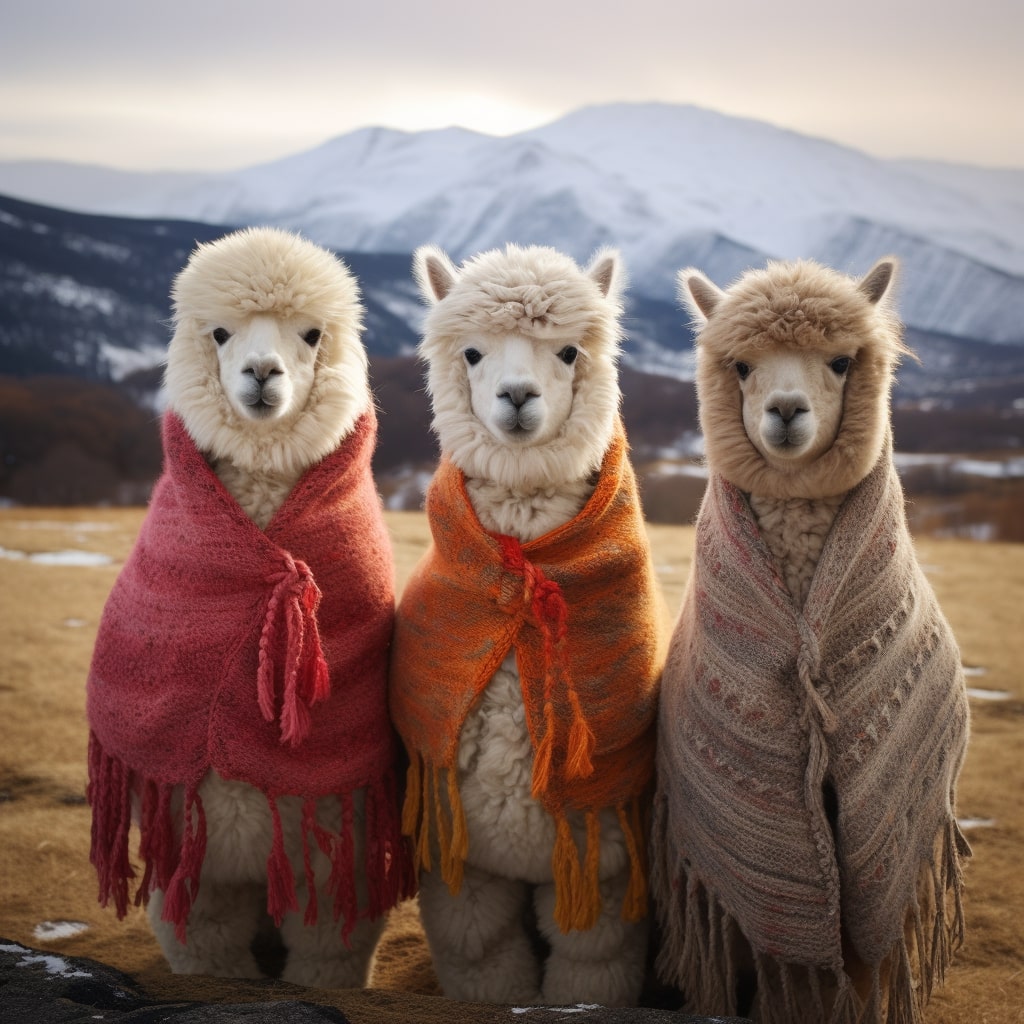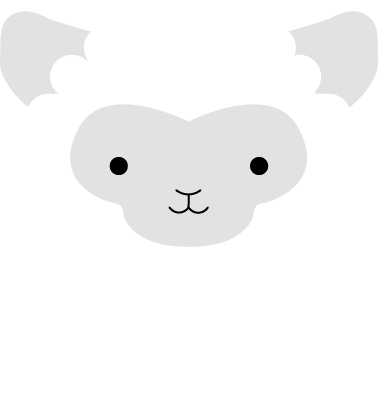Alpaca wool has multiple characteristics that make it special and it has some differences from other fibers. It is categorized as very soft and ranks among the world’s top choices for the softest fabrics. The micron count of alpaca wool varies from 16 to 30 microns. The finest category of alpaca wool is “Royal Alpaca” with an average of 18 microns, slightly above the finest wool, which is Qiviut (musk ox) with a grade of 12-14 microns.
Indice
How is the softness of wool measured?
Alpaca fiber has many characteristics. Micrometers are the metric used to measure the “fineness” of a fiber. Measuring the diameter of the fiber is replicable, objective, and can be standardized across all fibers in the world. Referring to “softness” is a bit more challenging because softness is subjective.
Microns (µm) are the diameter of the fiber itself measured in millimeters. 1 micron is one thousandth of a millimeter (0.001 mm). The lower the micron number, the finer the fiber is defined and thus softer, which translates to a higher quality fiber compared to higher values. Given its softness, alpaca wool is used not only for creating clothing but also for accessories, toys, and much more.
Does alpaca wool itch?
Alpaca wool is hypoallergenic, soft, fluffy, and most importantly, not itchy.
Alpaca wool does not itch. Alpacas have unique qualities that make their fur different from any other fiber in the world, including the fact that it does not cause itchiness. Alpaca wool (also known as alpaca fleece) is famous for its thermal characteristics and for being non-itchy.

What makes alpaca wool non-itchy?
Wool sweaters, scarves, and socks are ideal for relaxing in the cold months. But not everyone can wear normal wool because some people find it itchy. Alpaca wool, on the other hand, is not itchy and is also hypoallergenic, meaning everyone can use clothing, accessories, or toys made from it, even if they are allergic to other animal fibers.
One reason why sheep’s wool is itchy is because the fibers contain lanolin. This is a “wax” to which some people are allergic. No lanolin means no itch. At the microscopic level, wool fibers have a scaly surface that causes itchiness for some people. Alpaca fur does not have this scaly texture, meaning it won’t irritate sensitive skin. For those with allergies to animal fibers, alpaca wool is the perfect solution.
But why is alpaca wool soft?
One of the first responses when people see and touch alpacas is to realize they are incredibly soft. Indeed, in addition to the adorable appearance of these animals, we want to pet them because of their softness.
The first time you touch an alpaca, you immediately realize the unique qualities of alpaca fiber: not only is it incredibly soft, but it’s also cool in summer and warm in winter, in addition to being lightweight and water-resistant, because alpacas have developed these characteristics to stay safe and healthy.
Despite its softness, alpaca wool is quite durable and can also be washed clean if it gets dirty. Simply follow simple guidelines for the care and maintenance of alpaca fiber and clothing.
How warm is alpaca wool?
Alpaca wool has special properties that keep alpacas warm in their cold mountain environment and at the same time during warm periods shields them from the sun by trapping heat in tiny air pockets. The fleece is sheared, always without cruelty, before being transformed into alpaca wool garments. Since alpacas must be sheared annually to prevent tangles, shearing them and using the wool to create clothes or accessories is a benefit for all.
Alpaca wool is quite durable and can be cleaned if it gets dirty and needs to be washed and cared for.
Is alpaca wool difficult to care for and wash?
Alpaca wool is quite durable and can also be cleaned if it gets dirty. For more information on maintenance, consult our care guide.
Why does a lower micron number equate to a softer fabric?
Fibers with a smaller diameter have smaller scales that are less likely to protrude or be coarse. Just think of all those times we wore the “grandma’s sweater” and the itchiness it caused, it means that fiber had a large enough diameter to protrude and create itchiness.
How fine is alpaca wool?
Alpaca wool has several degrees of fineness. This means that not all alpaca fibers are the same, indeed there are many degrees of fineness. In the activity of breeding for the production of quality clothing, the search for fineness becomes the predominant aspect, as a garment with very fine fiber means a high-quality garment.
Alpaca wool compared to other woolly animals
It might be possible in the near future to compare alpaca wool with that of a mammoth. Until then, let’s examine the characteristics and differences between alpaca wool and some of the other most famous fibers in the wool community at this time.
Is alpaca wool softer than vicuña wool?
No, vicuña can be considered a more delicate cousin of the alpaca. Even roaming the Andean highlands, the highly protected vicuña can be sheared once every two years by a few authorized individuals. The average vicuña fiber is 12.5 microns and is more uniform in color, length, and durability compared to alpaca fiber.
Is alpaca wool softer than camel wool?
It depends. You may have heard of the trendy garment that every girl or boy should have in their wardrobe: the timeless ‘camel coat’. While we often think of coarser hairs due to the robust appearance of camels, the range averages between 5 and 40 microns.
A distinction can be made between soft hair and coarser hairs. Soft inner coats and baby camel are often used for finer items, while coarser hairs are used for coats, blankets, and carpets.
Is alpaca wool softer than merino wool?
The sheep that produce Merino also come from the Highlands, though from another part of the world. You will find these sheep in Australia and New Zealand. Similar to alpaca wool, Merino has a wide range of micron ranges within the type of wool. From 11.5-15 microns (Ultra-Fine) to 23-24.5 (Strong), Merino is one of the finest wools available.The sheep that produce Merino also come from the Highlands, though from another part of the world. You will find these sheep in Australia and New Zealand. Similar to alpaca wool, Merino has a wide range of micron ranges within the type of wool. From 11.5-15 microns (Ultra-Fine) to 23-24.5 (Strong), Merino is one of the finest wools available.
Is alpaca wool softer than llama wool?
If we had a money for every time an alpaca is mistaken for a llama or vice versa, we’d be very rich. However, from a wool perspective, they are comparable, so we understand the mix-up. Generally, the average llama fiber is 25-30 microns.
